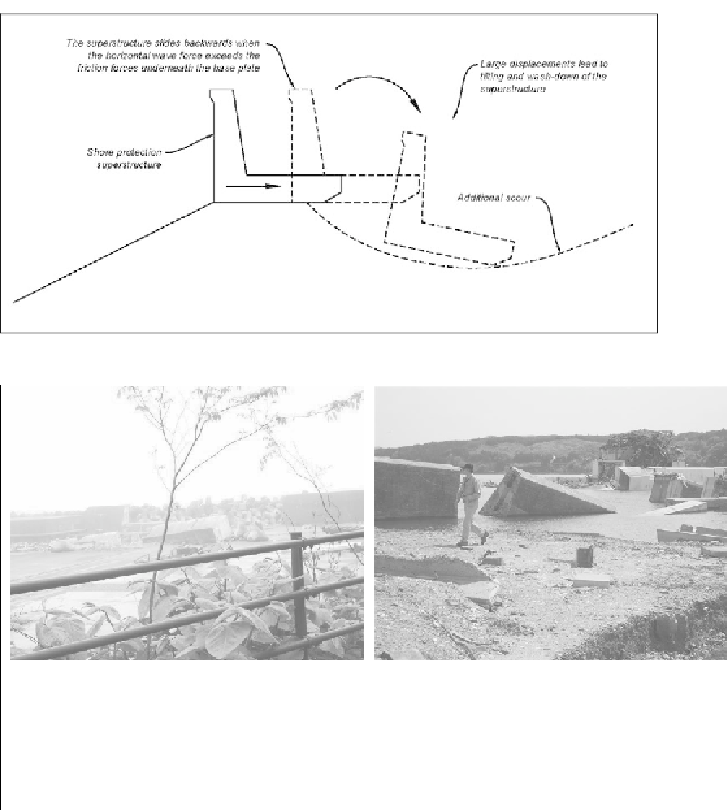Geoscience Reference
In-Depth Information
3.6
Hydrostatic
Pressures
Structures submerged or partially submerged during tsunami inundation are subjected
to hydrostatic pressures (see Figure 27). The net hydrostatic force in the vertical
direction, the buoyancy force, is equal to the volume of the fluid displaced by the
structure times the specific weight of the fluid. The buoyancy force reduces the total
dead weight of a structure and therefore reduces its resistance to sliding and
overturning. A difference in the hydrostatic pressures in the horizontal direction,
acting on the front and back surfaces of the structure, creates a net lateral pressure
force, which will also impact the stability of the structure and its resistance to
movement. Figure 44 shows this failure mechanism. Figures 45 - 50 show examples
of structures that failed due to this mechanism.
Figure 44. Structural displacement, sliding, rotation, and movement
Figure 45. Otanabe (Fudai) breakwater
— Caisson breakwater sections and
concrete armor units moved inland off
their rubble mound foundation due to
combination of hydrostatic and
hydrodynamic loads on seaward side
Figure 45. Otanabe (Fudai) breakwater
— Caisson breakwater sections and
concrete armor units moved inland off
their rubble mound foundation due to
combination of hydrostatic and
hydrodynamic loads on seaward side






Search WWH ::

Custom Search